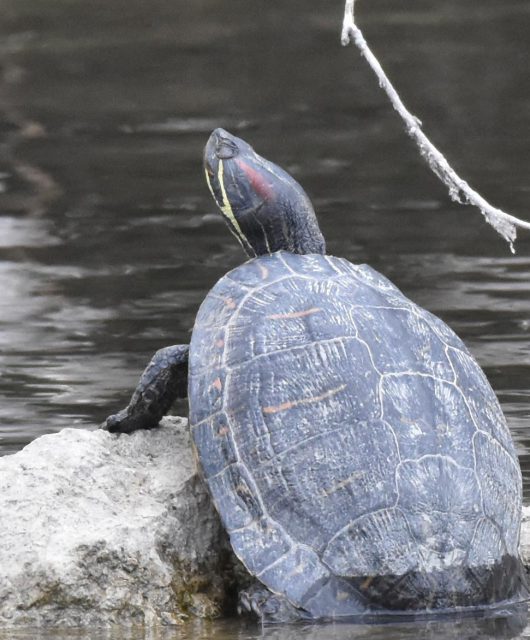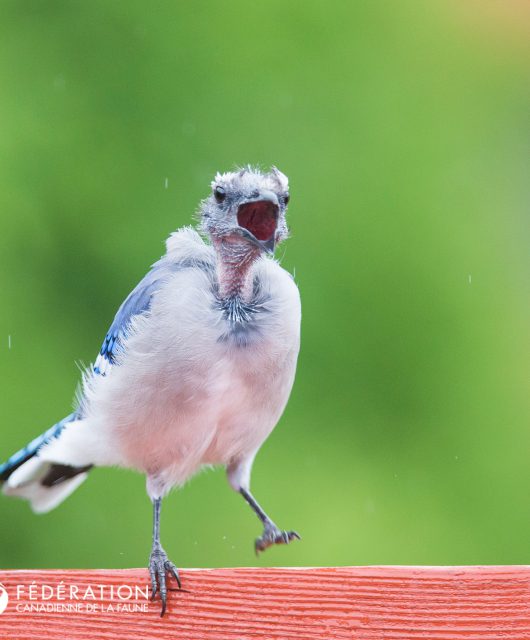If prairie flowers were countries, and bees their only residents, then not only would this world rival ours for diversity and population size, but their economies would be, well, humming.
Along with the hundreds of native plants on the prairies that exchange nectar for pollination, there is an equivalent assortment of pollinating insects, mostly bees, that are happy to make that trade. Every hour of every day during the spring and summer, there is a thriving global economy of flowers and pollinating insects from which we happily benefit, even if we don’t realize it.
Of the 390 or so bee species that call the Canadian prairies home (half of all native bees in Canada!), there are some truly magnificent, and very odd, characters.
Prime Prairie Producers
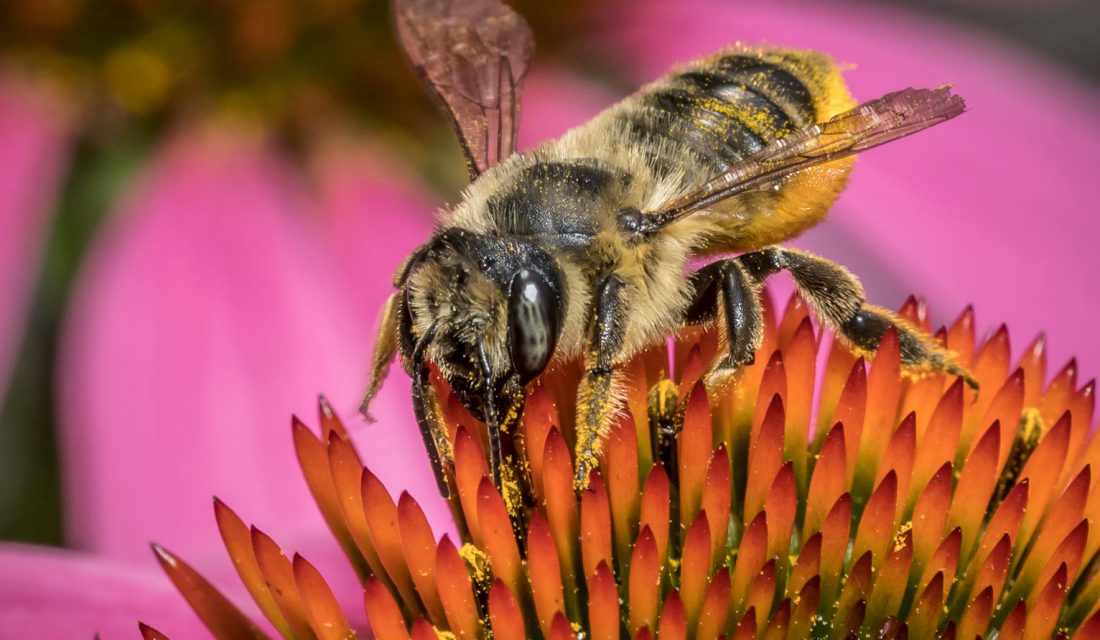
The Broad-handed Leafcutter Bee (Megachile latimanus), is an important crop pollinator that nests underground. Even for a bee, they look odd with bold orange hair, emerald green eyes and front mitts to rival a boxer. Hence their name. Their favourite plants to pollinate are legumes— peas, alfalfa, clover. This makes them both important for crops as well as the many wildflowers that grow along prairie roadsides.
Little Bee on the Prairies
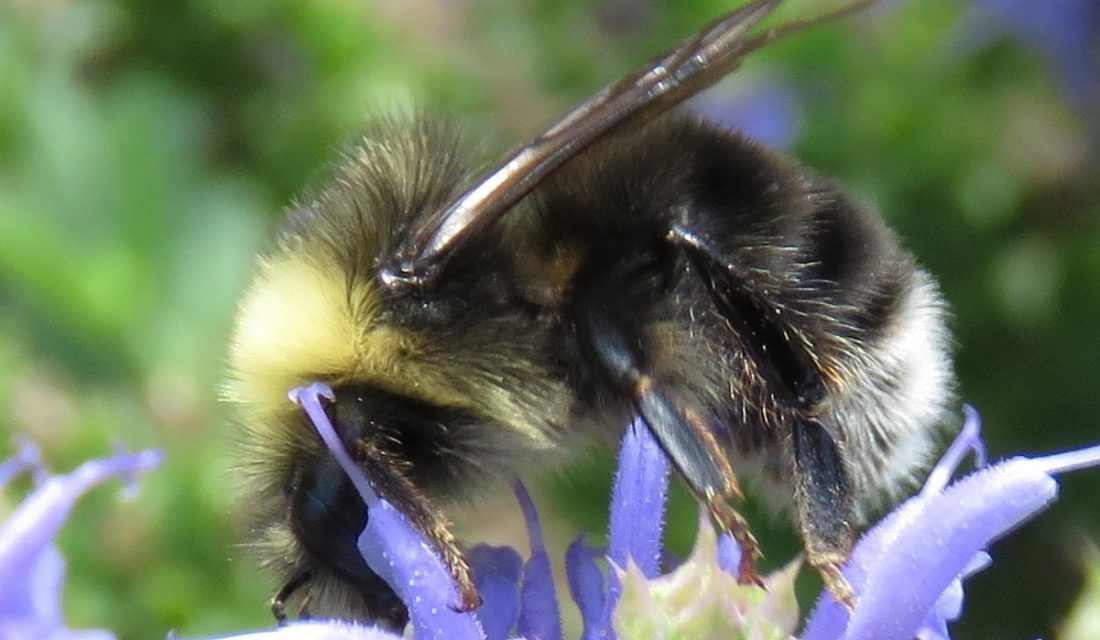
The Western Bumblebee (Bombus occidentalis) pick up where leafcutter bees leave off, visiting all kinds of flowers across the prairies, with a particular love for fruits like berries. Their pollination method, called buzz pollination, is to vibrate violently, releasing pollen that they collect along their hind legs before flying to the next flower. In the world of pollinators, the Western Bumblebee is a frequent flyer, visiting many flower “nations” within reach of their underground nest.
Bees are not the only prairie pollinators though. In the prairie flower economy, beetles, flies, and wasps are very productive citizens among the prairie floral nations.
Best of the Bugs
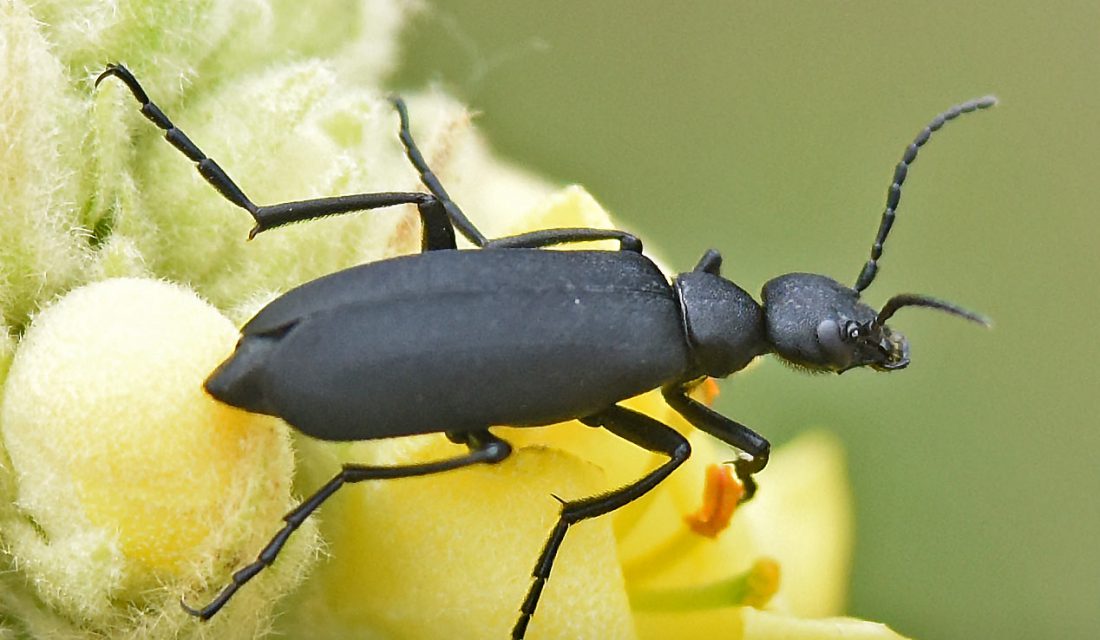
The Black Blister Beetle (Epicauta pensylvanica) are common across the prairies, and important Goldenrod pollinators. Syrphid Flies, also known as Flower Flies, look like bees, with prominent black and orange colouration. They are not bees, but effective pollinators. Although even the look of Crabronid Wasps, such as Sand and Weevil Wasps, is enough to strike fear in the average citizen, these harmless and solitary insects are important prairie pollinators, particularly of native herbs and forbs.
Conservation Counts
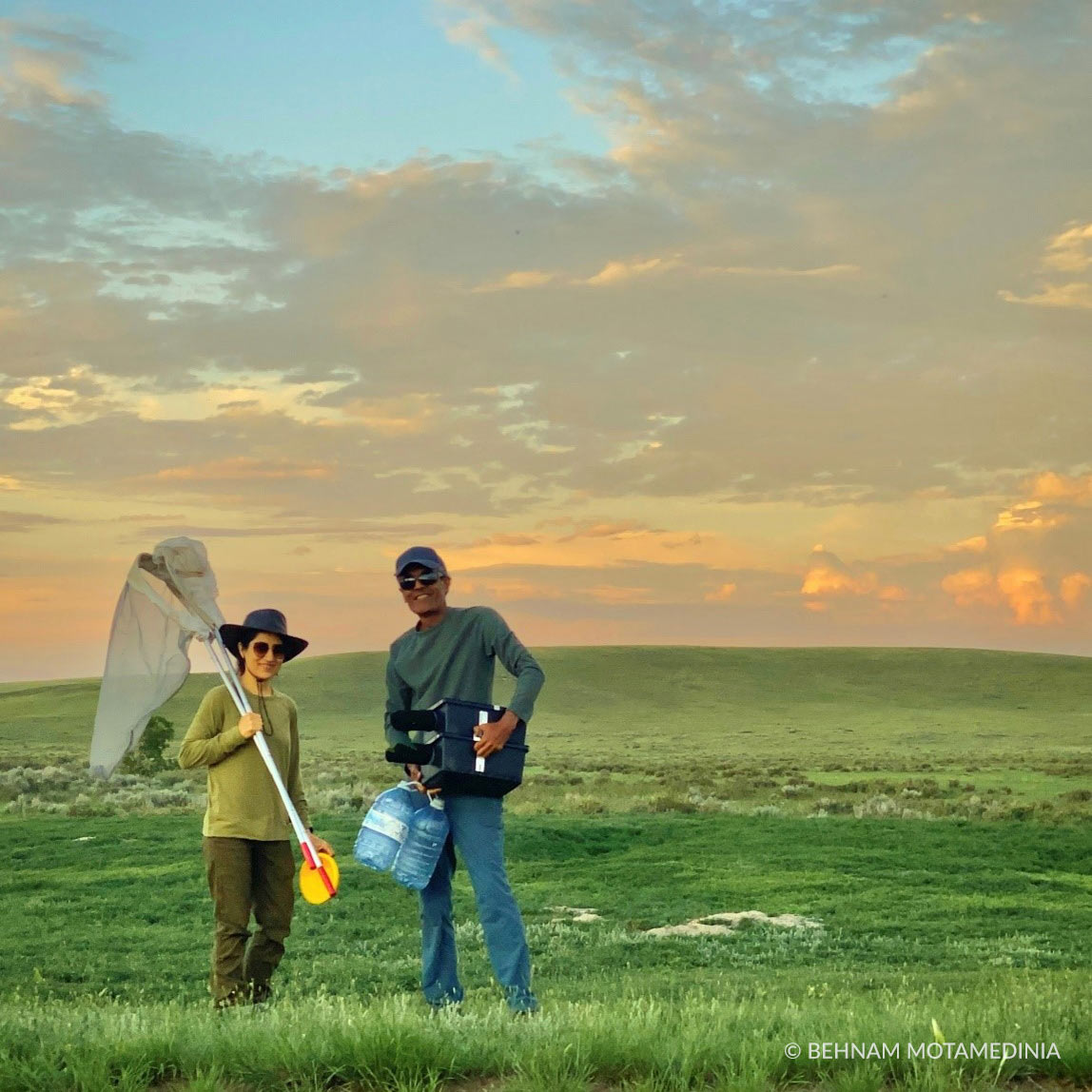
Last summer CWF collaborated with the South of the Divide Conservation Action Program, Birds Canada, and insect biologists at Carleton University to collect insect samples at sites where we also measured plants and birds. As we study how cattle grazing supports plants, birds and insects, we will learn more about where, and why, grassland pollinators are found on native prairie grasslands. We’ve collected thousands of insect specimens that are currently being identified. With insect populations in decline across Canada, and pollination services at risk as a result, this work will help us understand the role that native grassland management plays in conserving pollinator populations.
Pollen and nectar are the foundation of the natural floral economy on the prairies. Plants expend energy, gathered from the sun, to produce nectar and flowers. This is done in an effort to attract insects (and some birds) that will, in the process of feeding, spread pollen that will hopefully fertilize the next flower visited. Pollen itself is good food and many pollinators eat it along with nectar. This is the perfect economy to sustain a nation of flowers.
The native prairie grasslands are one of the world’s most endangered ecosystems. If these unplowed lands and cattle pastures are developed or converted to croplands, we may lose many of the wonders of our Pollen Nation.
Learn more about native prairie grasslands as well as ranchland and pollinator conservation programs on the prairies >

